Lisa See – On Gold Mountain
Posted 3rd June 2010
Category: Reviews Genres: 1990s, Memoir, Political, Social
1 Comment
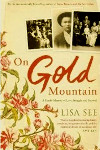
In the new world, known in 1800’s China as the Gold Mountain, fortunes were made by those whose lives were otherwise destined to be laborious. One of those lives was Fong See’s and he changed the make-up and the fortunes of his family forever.
Publisher: Bloomsbury
Pages: 376
Type: Non-Fiction
Age: Adult
ISBN: 978-0-7475-9907-4
First Published: 1995
Date Reviewed: 10th May 2010
Rating: 5/5
Lisa See, author of the later best-selling Snow Flower And The Secret Fan, details the business ventures and lives of her paternal family from the very first venture to America of her great-great-grandfather to the present day.
In 1867, Fong Dun Shung left his family in China to seek his fortunes in America. He soon brought his fourth son, Fong See, over to help him but ended up living out his later years in his home village. Fong See, on the other hand, lived to prosper in the United States, setting up an underwear company and marrying an American woman. The business changed to become an antique supplier. Fong See’s children learned perhaps more than he the injustice in the world, yet managed to be successful in their own right. As a memoir the book focuses on one subject in particular – business success in America – with information (a great amount, actually) about other aspects of family life. Amidst this is the story of the persecution of Chinese Americans and the many laws to dissuade them from doing practically anything other than stay at home.
On Gold Mountain reads like a work of fiction. The story is fascinating by itself but Lisa See (the author, whom I will refer to by first name from now on to avoid any confusion) has made it even better. A few of the dialogues are completely made up, as the amount of detail she goes into just isn’t possible to gather through sources, but instead of detracting from its success as you may think, this adds to the engrossing quality of the book. Lisa hasn’t just doled out dates and factual information about a story that, let’s face it, isn’t going to affect anyone but her own relatives, she’s made it compelling for the casual reader too. She’s used her skills as a writer and plenty of artistic license to create a work that her great-aunt Sissee, the person who proposed the idea of a memoir, would surely approve of.
Talking of Sissee, let’s get straight down to another note I made while reading this book – I, a reader in Britain with only outsider knowledge of Chinese culture, feel as though I’m part of the family. The book isn’t written in a way that entices the reader like this, and of course because the characters are real people they never address the audience, you’re just a fly-on-the-wall – but after all the information I’ve been given and after all the emotions I’ve been made to feel for these people I know I could sit down to lunch with them as boldly as if I’d been invited as kin. I was excited by Fong See and Ticie’s family and very upset as each passed away; even if I knew it was going to happen, I hoped that it wouldn’t. The family is accessible. The rogues of the story are likeable, even as they cause family disputes. No one is condemned, though there are good reasons why they could and perhaps should be. Everyone is described in detail enough that their unique personalities are shown – in the case of the siblings you have Ming and Ray – playboys and business-orientated, Bennie who is loyal, Eddy who wants to do his own thing, and Sissee who just wants freedom. It makes you think, should I be writing my own family’s history before it’s forgotten? No family history is plain and boring, and Lisa, with her incredible yet mostly family-centric story (no one changed the world, for example) proves that you don’t have to be of royal blood to have a good tale to tell.
Lisa makes her great-grandfather, Fong See, incredibly readable. Whether or not some of the events are fabricated to some extent the reader can really move into step with him and become absorbed in the story. For my part I must say that I’ve never felt such a pull from a book before, I was living as an invisible follower of Fong See and, his roguish elements included, I can see why Ticie, Lisa’s great-grandmother, was so drawn to him.
The characters focused on most are Fong See, Ticie, and their children. This creates two points of thought in my mind. The first is that depending on the individual preference of the reader for country or city living, either the first or second half of the book will be more intriguing. As America, at the time, was just forming, there are plenty of descriptions of farmland to whet the appetite of a person who prefers peace, but then as the cities expand there is little greenery and many factories so the detail is in the creation of material goods. Fong See and his first family’s story (he got around a bit) straddle both, but while Fong See and Ticie are together the emphasis is more towards the country. The second thought is that after Fong See and Ticie part ways the story is less engrossing, this can’t be helped of course, as it’s fact, but the interest garnered from the reader because of the story of a mixed-race family in troubled times, the adaptation to another’s culture, and the building up of a business, is lessened immediately following it. There is more to be had in the stories of the children for their number but as American laws are relaxed and life becomes more like our own today the narrative appears to slow down – however it’s not so much the story as the reader’s desire to continue reading. The problem is that the “action” comes in those first years and then of course there is no climax because the story can never end completely because this is the tale of a family still going today.
Lisa writes her account of Fong See crossing to America and then and only then gives all the other reported accounts that she has discovered. She ends the section brilliantly with a little wit, saying that we should probably trust the age and journey times Fong See gave to newspapers and customers. She wants the version she provided first – detailed and probably, by her own admissions of the information, dreamt up by relatives – to be true, but will give us the other accounts anyway. That she uses wit may seem self-absorbing, but the way she words it makes it akin to the usual basic mysteries every family has – as more generations are born and previous ones disappear, information gets blurry.
In relation to this, the wit in the book, I would like to put forward a quote:
Fortunately, the Pruetts were Pennsylvania Dutch and not given to concerns over worldly possessions.
While the initial opinion may be that Lisa is on a moral high ground flaunting her superior ancestry, isn’t it that she’s injecting humour into a relatively arduous subject? Both possibilities are equally possible, but there’s no doubt it’s the latter, the humour.
Irony – the information Lisa provides on reclaimed land. The Chinese reclaimed land from marshes and bogs when no one else would because it was dirty and infested but they were not granted any of that new land because of the Alien Land Act. Aliens? Surely everyone who wasn’t Native American was alien – but the Caucasians didn’t think of that because they thought they were superior. The people who put the act in motion, the invaders, likely British-born or if not at least European, were not natives of the land themselves. It’s disgusting when you think about it. Looking back on one’s country’s ancestors is always a cause for distress at some point, no matter where you’re from, but to read a true account of how your people were so self-righteous is most difficult. In this reader’s humble opinion, yes the Chinese may have been cruel themselves at the time with their foot-binding and treating women as slaves, but it was the Caucasians who were the true aliens, for their actions towards other races rendered them inhuman.
Although the Chinese saw America as a gold mine there was nothing gold about the few dollars the first workers brought home. In retelling the See family story Lisa describes the creation of the original railroads – the meagre pay, the poor living conditions, the perils of the parties using dynamite to blow holes in the hills – and the many shop keepers who struggled to earn their keep. The lucky ones, who had the ideas and ambition to start their own businesses, like Fong See, were those who caused the phrase “gold mountain” to stay in use, but they were few and far between; and, to determine another aspect of this school of thought: as Fong See remarks, one could be a rich man in China from the money they made in America, but in the west they were still poor. What the Chinese didn’t realise was the extent of the difference between quality of life and cost of living. To be truly rich, one had to return to China, making their time in America simply a long sabbatical.
In her fiction work, Lisa uses words brilliantly. Because of the nature of this book there are few incidences for poetic language but they do exist, and they exist in the form of those thoughts Lisa’s family members have. Perhaps this was part of the reason Lisa created those thoughts, to give her a chance to write with more flare and more of the style she employs in her novels.
In early April of 1877, Luscinda Pruett lay dying. Her mind wandered over her life in Oregon, her children, her husband, and God, whom she knew she’d be meeting soon. She’d had a fever for weeks, and now the pneumonia had grabbed hold of her body and wouldn’t let go. Not that it wasn’t peaceful lying here, as Mrs. Peterson sponged her forehead with cool cloths and the Reverend Peterson gave a discourse on the second commission of Christ to his Apostles. Or was he reading from the tenth chapter of First Corinthians? Maybe that wasn’t it at all. She knew she’d heard him give those sermons before, at their Sunday meetings. No matter.
The above is quite possibly exactly what Luscinda Pruett was thinking, safe as her thoughts were from the limitations of a strict outside world. But more to the point Lisa has provided her great-great-grandmother, who has a minor role to play in her story, with a grand final performance.
Lisa’s descriptions are magnificent, again in this you can see the novelist in her trying to climb out of the closet into which she’s stowed it away and blending its fiction skills with fact:
For Choey Lon, China City was a magical place where the fragrant smell of incense wafted from a temple and gentle breezes passed through wind chimes hanging before shops.
In writing On Gold Mountain Lisa fulfilled her objective, to honour her aunt Sissee’s request that their family story be told, and brought into being a commercially available account of a minority living amongst a majority, to a world where it’s likely not many of these events have been written about in such a way and with such filial passion. The stress may be on her family but there is enough material to take away and add to any knowledge you might have had of the period previously.
On Gold Mountain is a lovingly rendered story of adventure, love, and above all triumph. And I’m afraid you just have to love an author who uses the word “shenanigans”.
Related Books
1 Comment
Comments closed











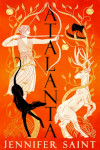






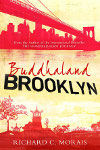
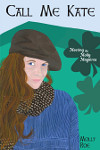
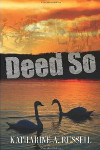






June 5, 2010, 7:42 am
I enjoyed Secret Fan and loved Peony in Love, so I’ll have to give this one a go! :)
Charlie: Definitely! I haven’t read Secret Fan yet, but I want to and I hear it’s going to be filmed so I should probably get to it soon.